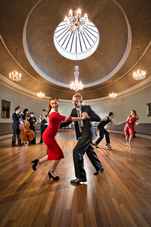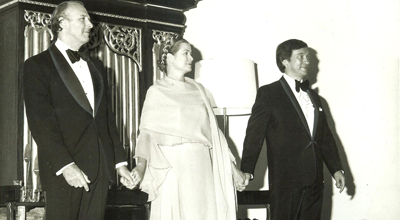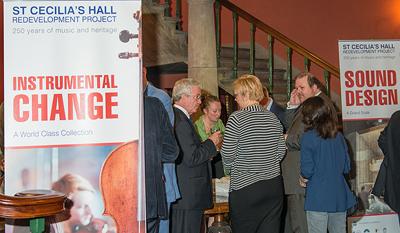Good night sweet Cecilia
As we close the doors on the most recent chapter of St Cecilia’s Hall’s story, we look back on the secret history of Scotland’s oldest concert hall and the incredible collection of musical instruments housed within.

Originally built in 1763 and named after the patron saint of music, St Cecilia’s Hall is the oldest purpose-built concert hall in Scotland, and the second oldest in the British Isles.
The building was originally commissioned by the Edinburgh Musical Society and constructed to the designs of architect Robert Mylne.
A life well lived
In its lifetime it has served as a Baptist church, a Freemason’s lodge, a warehouse, a school and the Excelsior Ballroom, before being purchased by the University in 1959 to provide a home for the collection of early keyboard instruments of the late Raymond Russell.
Facts about the Hall
- The Hall inspired an 18th century drinking game called 'saving the ladies'. The exact rules are lost to history but what is certain is that gentlemen drank immoderately.
- In 1976, Princess Grace of Monaco performed four poetry readings at St Cecilia’s Hall for the American bicentennial. It was her first performance since she had ceased being Grace Kelly.

- The sedan chairs which brought ladies to concerts were ‘parked’ in the lower parts of the building while the ladies were enjoying the concerts upstairs. Reportedly, at the end of proceedings, the chairmen lit their torches downstairs creating a cloud of suffocating smoke that greeted departing concert goers.
- A clavichord, built by Johann Hass in 1763 and part of the museum's collection, contains the highest number of materials which are now illegal, or are best avoided for conservation reasons, including ivory, tortoiseshell, whalebone, mother-of-pearl and Brazilian rosewood.
- English guitars are neither 'English' nor 'guitars'. They are citterns and were found in Portugal and other European countries as well as England. The museum has one which was made with a miniature piano mechanism. Instead of plucking the strings with your fingers, you press the keyboard notes and small hammers come out through the rose hole and hit the strings.
The next chapter
Over the next two years St Cecilia’s will undergo restoration and redevelopment works to provide enhanced access to the building and its museum of instruments.

One last concert
The Principal, Professor Sir Timothy O'Shea joined staff, students, alumni, friends and supporters earlier this month to enjoy one final concert in this unique Edinburgh venue.
Guests were treated to a recital from alumnus David Gerrard, who played on the 1709 Thomas Barton harpsichord from the collection. The evening was brought to a close with a beautiful performance from Dr Jenny Nex (voice) and Dr John Kitchen (harpsichord).
Find out more
To find out more about St Cecilia’s Hall and the redevelopment project please visit the website below.

